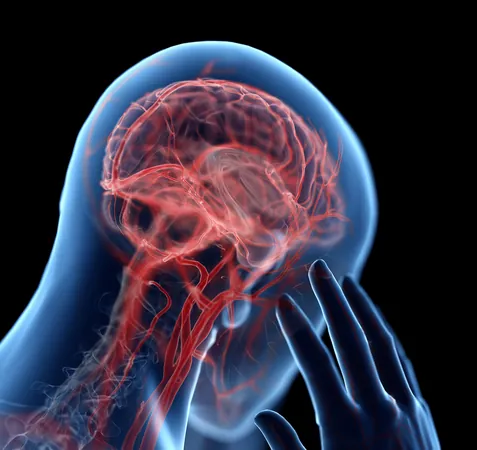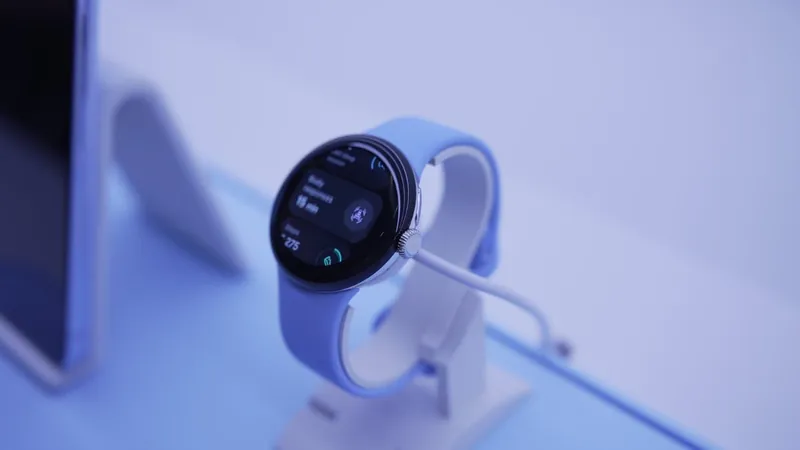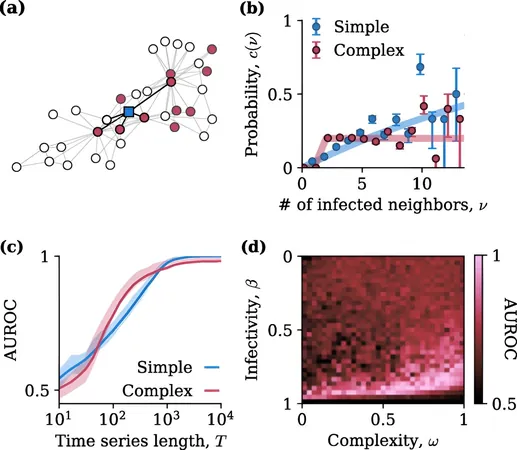
Groundbreaking Study Links Migraine and Insomnia to Disturbances in Brain Connectivity
2024-10-09
Author: Siti
Introduction
A groundbreaking study from researchers at The First Affiliated Hospital of Anhui Medical University in China has unveiled significant insights into the complex relationship between comorbid migraine and insomnia. The investigation, led by Changlin Wang, revealed abnormal functional connectivity patterns in the locus coeruleus (LC) region of the brain among patients suffering from both conditions.
The Connection Between Migraine and Insomnia
Migraine and insomnia are notorious for often co-occurring, creating a vicious cycle that worsens symptoms of both ailments. The locus coeruleus, located in the brainstem, is crucial for the production of norepinephrine, which plays a key role in regulating pain, sleep-wake cycles, and emotional behavior. Researchers have long speculated that disruptions in the noradrenergic system of the locus coeruleus could underlie the comorbidity of these two conditions.
Study Methodology
This study highlights the necessity of exploring the neural mechanisms that connect migraine and insomnia, especially given the limited neuroimaging data available until now. The study utilized resting-state functional magnetic resonance imaging (fMRI) to assess the functional connectivity of the locus coeruleus in three patient groups: 30 individuals with comorbid migraine and chronic insomnia, 30 with only migraine, and 30 healthy controls.
Findings and Results
The participants who suffered from migraines exhibited more severe anxiety and depression symptoms compared to healthy individuals. However, no significant differences were observed in headache characteristics between those with and without insomnia.
The results were startling: patients experiencing both migraines and insomnia displayed altered functional connectivity in key brain regions, including the dorsomedial and dorsolateral prefrontal cortices, anterior cerebellum, thalamus, and the parahippocampal gyrus. Notably, the study identified a strong negative correlation between insomnia severity and the connectivity of the locus coeruleus with the dorsolateral prefrontal cortex, suggesting that reduced communication between these areas might be a potential biomarker for sleep disturbances in patients facing both conditions.
Moreover, the researchers found that a higher Pittsburgh Sleep Quality Index (PSQI) score, which indicates poorer sleep quality, correlated positively with connectivity between the locus coeruleus and the caudate, reinforcing the relationship between sleep quality and brain activity.
Interestingly, increased connectivity between the locus coeruleus and the dorsomedial prefrontal cortex was associated with longer migraine attacks in patients also suffering from insomnia. This paints a complex picture of how brain connectivity might influence not just the experience of migraines, but also the duration of these debilitating episodes.
Limitations of the Study
While the study presents exciting new perspectives, researchers cautiously noted limitations, including its cross-sectional design and small sample size. They acknowledged that the timing of MRI scans—conducted between 4 PM and 10 PM—could be a factor, as participants with insomnia may experience heightened anxiety near their typical bedtime.
Furthermore, the reliance on self-reported measures of insomnia, rather than objective metrics like polysomnography, poses another limitation. The choice of a 3T fMRI, while valuable, lacks the resolution needed to thoroughly investigate small subcortical structures.
Conclusion and Future Research
In conclusion, this important study opens the door to potential new therapeutic interventions by highlighting the locus coeruleus-noradrenergic system's crucial role in managing both migraine and insomnia. Future research is needed to validate these findings and refine our understanding of how these complex brain networks contribute to these intertwined conditions, giving hope to millions who suffer from these painful and disruptive disorders.
Stay Tuned
Stay tuned for more updates as science continues to uncover the hidden connections between our neurological health and daily struggles!





 Brasil (PT)
Brasil (PT)
 Canada (EN)
Canada (EN)
 Chile (ES)
Chile (ES)
 España (ES)
España (ES)
 France (FR)
France (FR)
 Hong Kong (EN)
Hong Kong (EN)
 Italia (IT)
Italia (IT)
 日本 (JA)
日本 (JA)
 Magyarország (HU)
Magyarország (HU)
 Norge (NO)
Norge (NO)
 Polska (PL)
Polska (PL)
 Schweiz (DE)
Schweiz (DE)
 Singapore (EN)
Singapore (EN)
 Sverige (SV)
Sverige (SV)
 Suomi (FI)
Suomi (FI)
 Türkiye (TR)
Türkiye (TR)